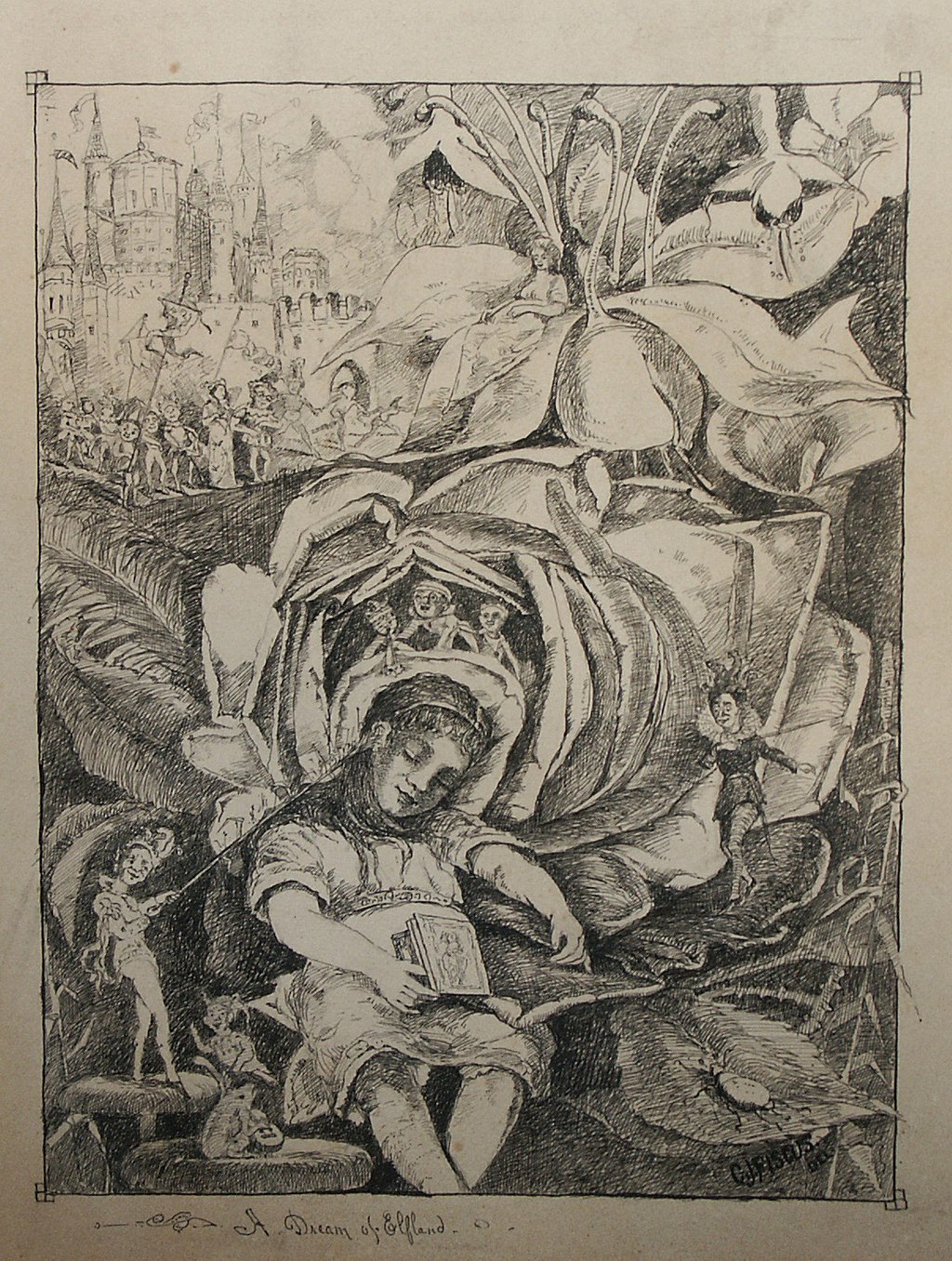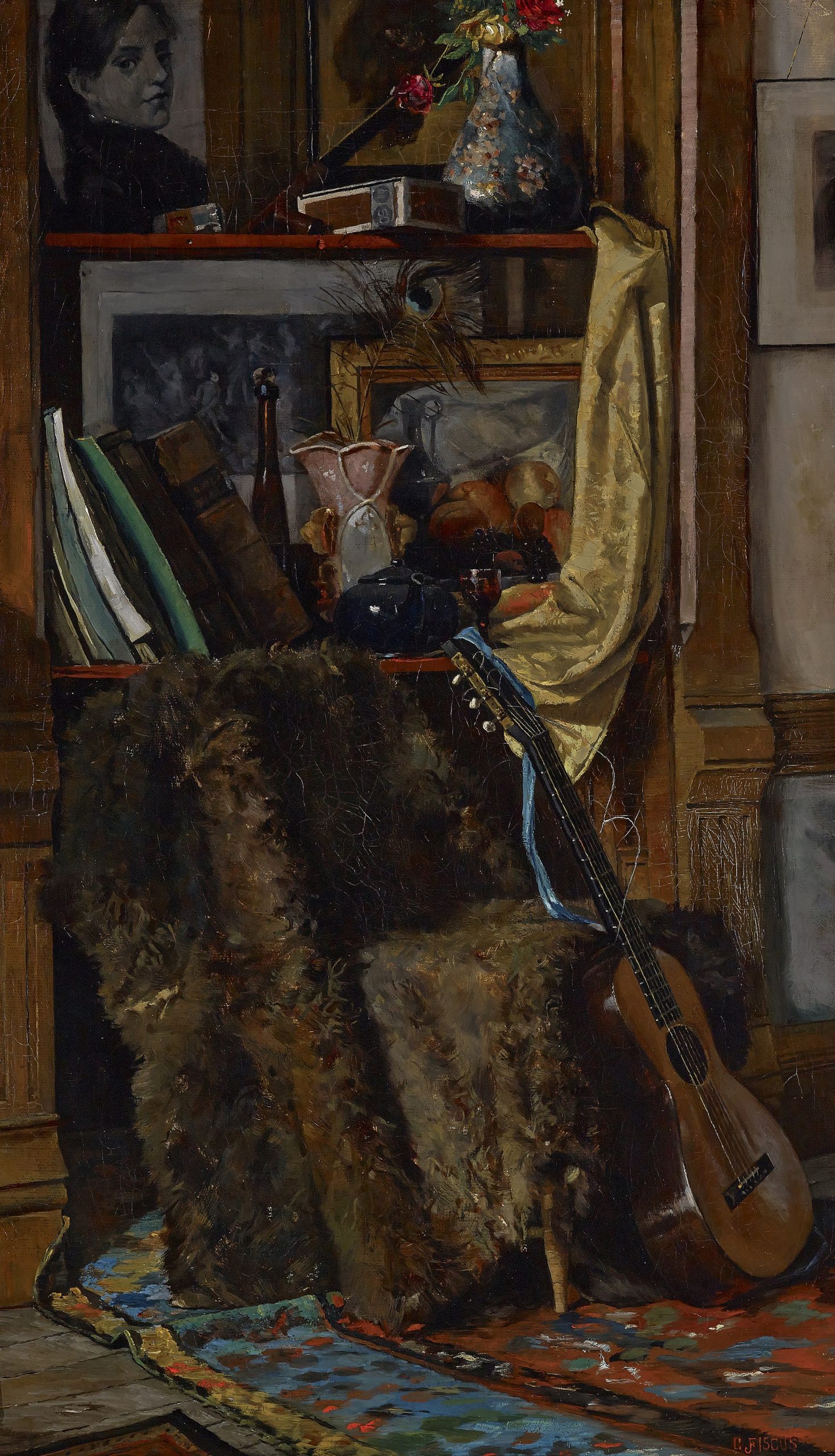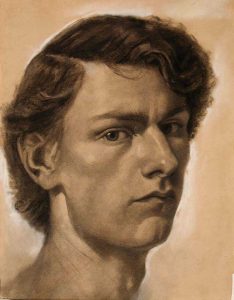(May 26, 1861-Feb. 6, 1884). Portrait and genre artist Charles Joseph (C. J.) Fiscus was born in Indianapolis to Thomas W. and Elizabeth Jennie Fiscus. His birth came almost five weeks after the start of the . Though the war disrupted the lives of many Indiana families, Fiscus’ father continued his trade as a brick mason during the first two years of the conflict and left his young family for only two short stints of military service. At the war’s end on April 12, 1865, the young Fiscus family lived at 280 East St. Clair Street, where Fiscus would reside his entire life.

Fiscus received his formal training at the Indiana School of Art (ISA), which resided in the Fletcher and Sharpe Block located at the southwest corner of Washington and Pennsylvania streets. Established in 1877, it was the earliest school of art in the state. Fiscus’ instructors included native Hoosier artists James Farrington Gookins and John Washington Love.
While at the school, Fiscus drew and painted with other talented artists and students, such as (1854–1935). On May 7, 1878, the newly formed Indiana Art Association (IAA), under the direction of the Indiana School of Art, opened its first quarterly exhibition. Fiscus displayed eight drawings alongside the works of such artists as , who had maintained a studio in Indianapolis since about 1840.
The Indiana School of Art, however, quickly declined, due to lack of funding and waning interest, and closed in 1879. Fiscus and six other artists, including Forsyth and Frank Edwin Scott, then formed the Bohemian (Bohé) Club. They rented courtyard rooms that the ISA had occupied in the Fletcher and Sharpe Block. The club was a place for artists to socialize and continue practicing their artistic skills.
In 1880, James Gookins left Indianapolis to open a studio in Terre Haute, Indiana. Fiscus followed him to continue his studies but returned to Indianapolis after a short time. He then went into business at 69 Fletcher and Sharpe Block with his fellow Bohé, Scott. However, the business was short-lived because Scott was accepted to the Art Students’ League in New York in 1881. Over the next three years, Fiscus carried on as a solo artist, eking out a meager living drawing portraits and selling an occasional sketch.

Fiscus reached his professional pinnacle in 1883. From April 2 to May 12, he showed The Bachelor Boudoir (Corner of the Studio) and one other of his pieces at the National Academy of Design’s Fifty-Eighth Annual Exhibition in New York. Also exhibiting were artists such as Thomas Moran of the Hudson River School, a circle of New York City-based landscape painters considered the first true American group of artists.
Fiscus displayed two of his watercolor studies from nature at the first international exhibition of the (AAI), held at the from November 7-30, 1883. Suffragist efforts to promote art appreciation and education in Indianapolis had resulted in the formation of the Art Association of Indianapolis (AAI), on May 7, 1883, only a few months earlier. Painter and AAI founder encouraged some of the city’s best artists, including Fiscus, to loan their work for this first AAI exhibition that featured around 500 artworks. , who had begun his painting career under the tutelage of painters and Cox in Indianapolis, and Moran also participated.
In late 1883, Fiscus accompanied some of his fellow artists on one of their customary sketching excursions to the countryside. He spent the entire night working outdoors in the frigid Indiana weather and caught cold. After returning home, he became seriously ill and died at his family’s home. He was buried at .
Nineteen years after Fiscus’ death, 11 of his paintings were part of a retrospective and contemporary exhibition of Indiana art held at from April 27 to May 9, 1903. Fiscus’ works included Self-Portrait, some scenes in and around Indianapolis, and various still life pieces.
currently houses most of Fiscus’ surviving work, with a few known pieces in a private collection.

Help improve this entry
Contribute information, offer corrections, suggest images.
You can also recommend new entries related to this topic.





